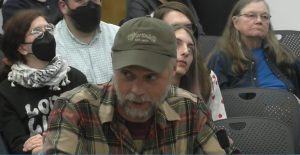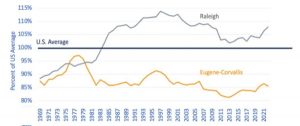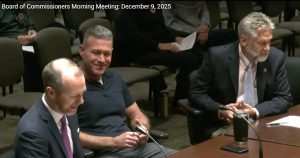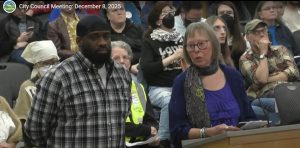LTD to identify, use five levels of public engagement
5 min read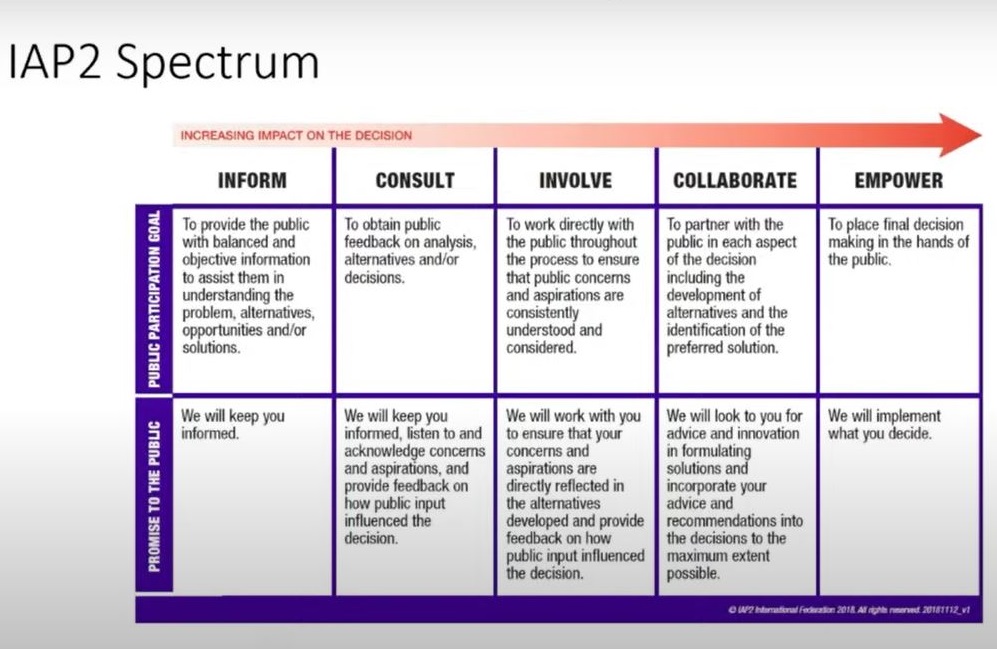
LTD staff presented a public engagement framework at the Nov. 3 work session.
[00:00:09] Thomas Schwetz (Director of Planning and Development): The State of Oregon has really strong land use planning goals. And the number one goal is to develop a citizen involvement program that ensures the opportunity for citizens to be involved in all phases of the planning process. That goal has been in place for several decades and has driven a lot of the public involvement that you see in particular from Eugene, Springfield, Lane County, but also, to be consistent with what they do, we are looking at that. And in addition you may have heard reference to the International Association of Public Participation or IAP2, and as we’ve looked in it into it, we are going to be using the IAP2 framework as a foundation for the development of our public engagement plans moving forward.
[00:00:57] Jeramy Card (Associate Service Planner): The IAP2 is the international association for public participation. so IAP2 has a spectrum of public involvement. It guides the decision-making bodies to determine what level of public participation is going to be used for a given project or process. These levels are inform, consult, involve, collaborate, and empower. Each level has a specific goal for public participation. And each one has a promise to the public and makes it clear how you’re going to engage the public and what you were going to do with their feedback.
Thank you for supporting
local civic journalism
[00:01:29] As you move to the right along the matrix, the level of public participation, or the level of impact that the public has on the decision, increases. The higher the level of engagement, the more decision-making power you’re giving to the public. Moving higher on the level of engagement does not mean more meetings or more flyers or talking to more people. Each level has a variety of tools to interact with the public and getting input. It’s all about the quality of that engagement, how you’re conducting it and staying true to that promise to the public, with each of those levels.
[00:02:04] John Q: The lowest level is “inform.”
[00:02:06] Jeramy Card: Inform is the first level of participation. The goal is to provide information to the public to help them understand the problem or project at hand. The promise to the public is that we will keep you informed.
[00:02:17] IAP2 believes that providing information is the foundation for public participation, and some of the examples from LTD on, the informed level of engagement are things like sending out snow and ice communication. That’s a very technical thing. We decide where the buses go, how we can operate them safely. The public doesn’t have a lot of input to give on that. So it’s a, an informed level.
[00:02:41] John Q: The highest level is “empower.”
[00:02:43] Jeramy Card: The goal of empower is to place the decision-making power in the hands of the public. The promise to the public is that we will implement what you decide. There’s no real specific example of LTD of empower level of participation.
[00:03:01] Andrew Martin (Transit Planner): MovingAhead is a really good example because we’ve done a lot of different types of public participation.
[00:03:07] We started out wanting to talk with the community about potential investments on five different corridors, in Eugene specifically, and we said, well, we should really let the community design those corridors, and we let people build what they think the roadway should look like. And we took it back to the engineers and the planning team and we made that a reality. We started with what the community wanted. Staff were back in the office doing a lot more technical work, but we were still out in the community doing a lot of information sharing.
[00:03:39] We published our alternatives analysis in the fall and started a process that required us to do actually a couple of involve -type activities. The last big milestone, which is decision-making for MovingAhead, that’s where the consult level is. People will be able to come and express their concerns in the normal public comment forum, but we’re not going to respond to their feedback again, which is why we say we’re consulting with them. We’re not making a promise that their input will result in revisions at that stage with the decision making.
[00:04:09] So with that, we just wanted to share how we’re approaching public participation, particularly after we’ve been doing this IAP2 training and really clarifying, I think, how we can talk about it. These are things we’ve always done, but for me, the framework has really provided, I think the language to better describe what our expectations and our goals are around public participation.
[00:04:28] John Q: Andrew said LTD chose the “inform” level for Phase One, and the “consult” level for Phase Two of its Mobility Management strategy.
[00:04:36] Andrew Martin: The Mobility Management Strategy is a project that we really hope will help clarify how LTD can be successful in achieving our mobility management goals. It begins with a community vision in which the entire transportation network, public transit, private operators, cycling and walking and others work together with customers and others to deliver the transportation options that best meet the community’s needs. We’re seeking to clarify what role LTD is strong at playing in our partnerships and how we might assess new modes of transportation within the context of our current operation.
[00:05:09] We’re not proposing to change anyone’s service as a result of this project. Any service changes or proposals would be addressed through other projects, other plans. The mobility management strategy is about understanding what roles we can play and how we can be successful in those roles. Therefore, the impact on the public is fairly low as a result of this project. In the first phase, we believe it’s appropriate to inform the community about the project and what we’re working on. Much of the background research and the development of the framework is inherently technical. However, the second phase of the project does have space for public input. The consult level is appropriate because we will consider all of the input, but we will have to make decisions based on the budget and schedule.
[00:05:49] John Q: LTD looks to better involve citizens in all phases of the planning process.
